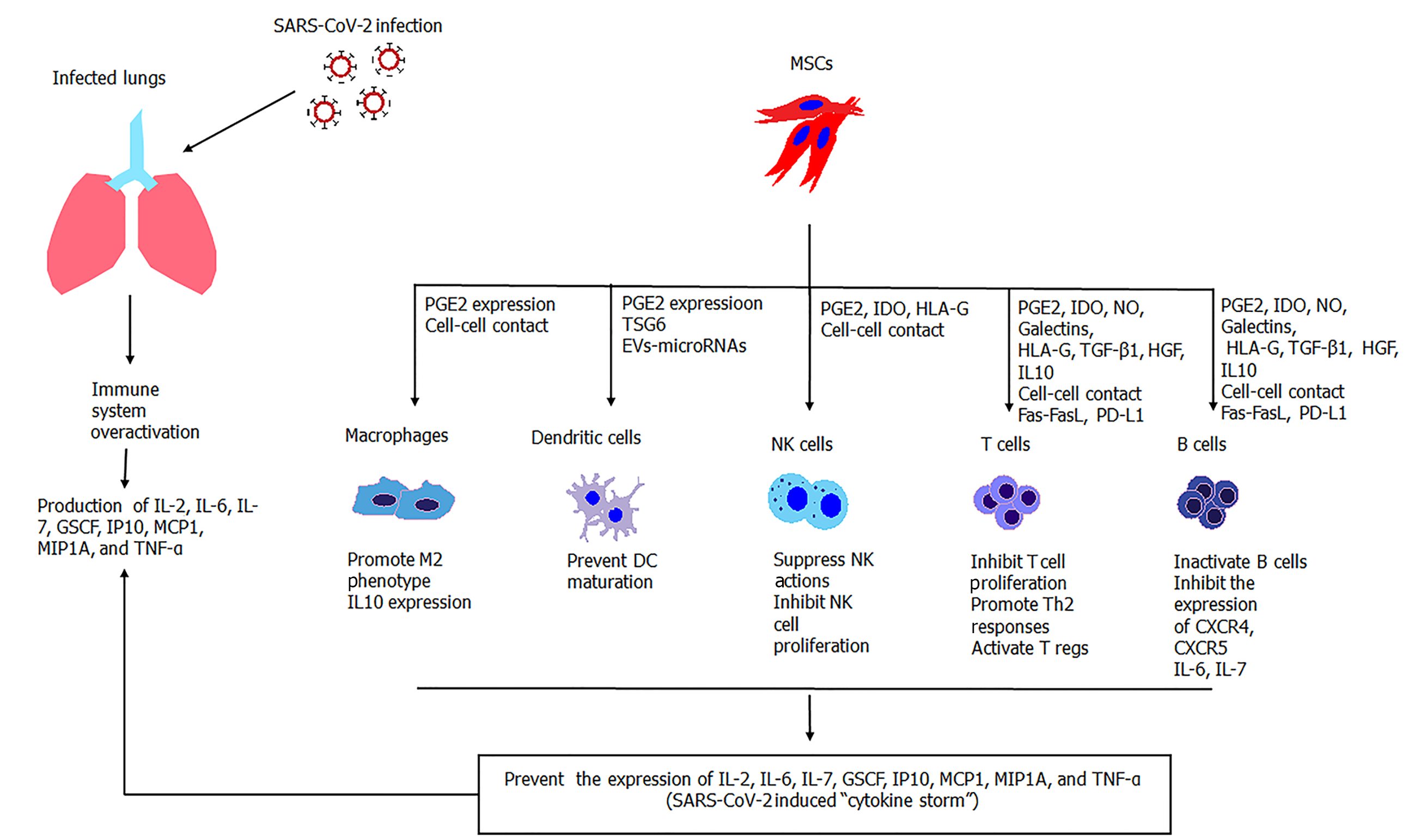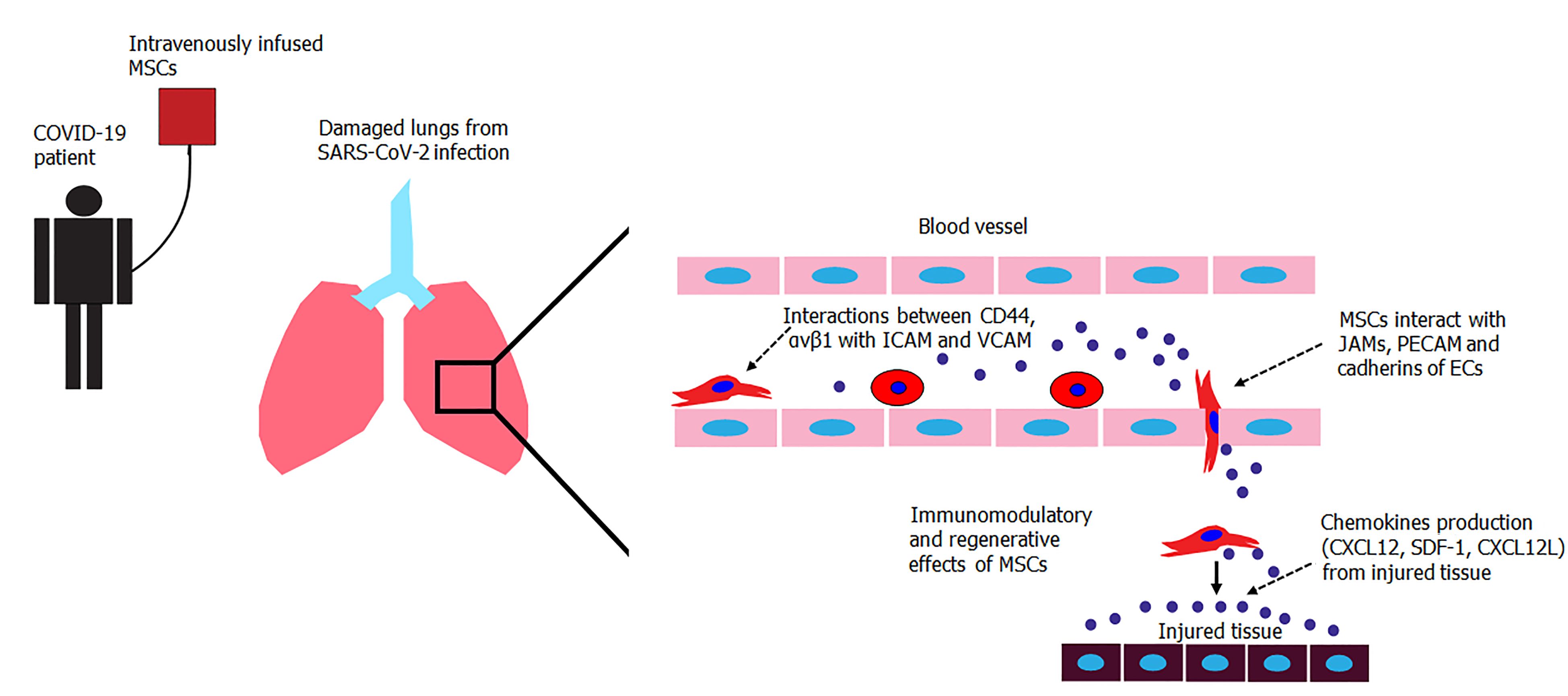Copyright
©The Author(s) 2020.
World J Stem Cells. Aug 26, 2020; 12(8): 731-751
Published online Aug 26, 2020. doi: 10.4252/wjsc.v12.i8.731
Published online Aug 26, 2020. doi: 10.4252/wjsc.v12.i8.731
Figure 1 Immunomodulatory properties of activated MSCs against overactivated immune cells during SARS-CoV-2 infection.
MSCs efficiently suppress the immune responses through the secretion of soluble molecules or cell-cell contact interactions. MSCs have a broad effect on the immune responses exerted by macrophages, dendritic cells, natural killer cells, and T and B cells. SARS-CoV-2: Severe acute respiratory syndrome coronavirus-2; MSCs: Mesenchymal stromal cells; NK cells: Natural killer cells; NO: Nitric oxide; IDO: Indoleamine-2,3-dioxygenase; EVs: Extracellular vesicles.
Figure 2 Transendothelial migration of intravenously infused MSCs in COVID-19 patients.
Proposed mechanism of MSCs trafficking towards to chemokine stimuli produced from affected cells. MSCs perform endothelial rolling through interactions of CD44 and ανβ1 with intercellular cell adhesion molecule and vascular cell adhesion molecule. Transendothelial migration of MSCs is mediated through interactions of junctional adhesion molecular, platelet endothelial cell adhesion molecule PECAM, and cadherins. Upon arrival to their destination, MSCs exert their immunomodulatory and regenerative potential to the damaged tissue. COVID-19: Coronavirus disease-19; ICAM: Intercellular cell adhesion molecule; MSCs: Mesenchymal stromal cells; VCAM: Vascular cell adhesion molecule; PECAM: Platelet endothelial cell adhesion molecule; JAM: Junctional adhesion molecular; ECs: Endothelial cells.
- Citation: Mallis P, Michalopoulos E, Chatzistamatiou T, Stavropoulos-Giokas C. Mesenchymal stromal cells as potential immunomodulatory players in severe acute respiratory distress syndrome induced by SARS-CoV-2 infection. World J Stem Cells 2020; 12(8): 731-751
- URL: https://www.wjgnet.com/1948-0210/full/v12/i8/731.htm
- DOI: https://dx.doi.org/10.4252/wjsc.v12.i8.731










